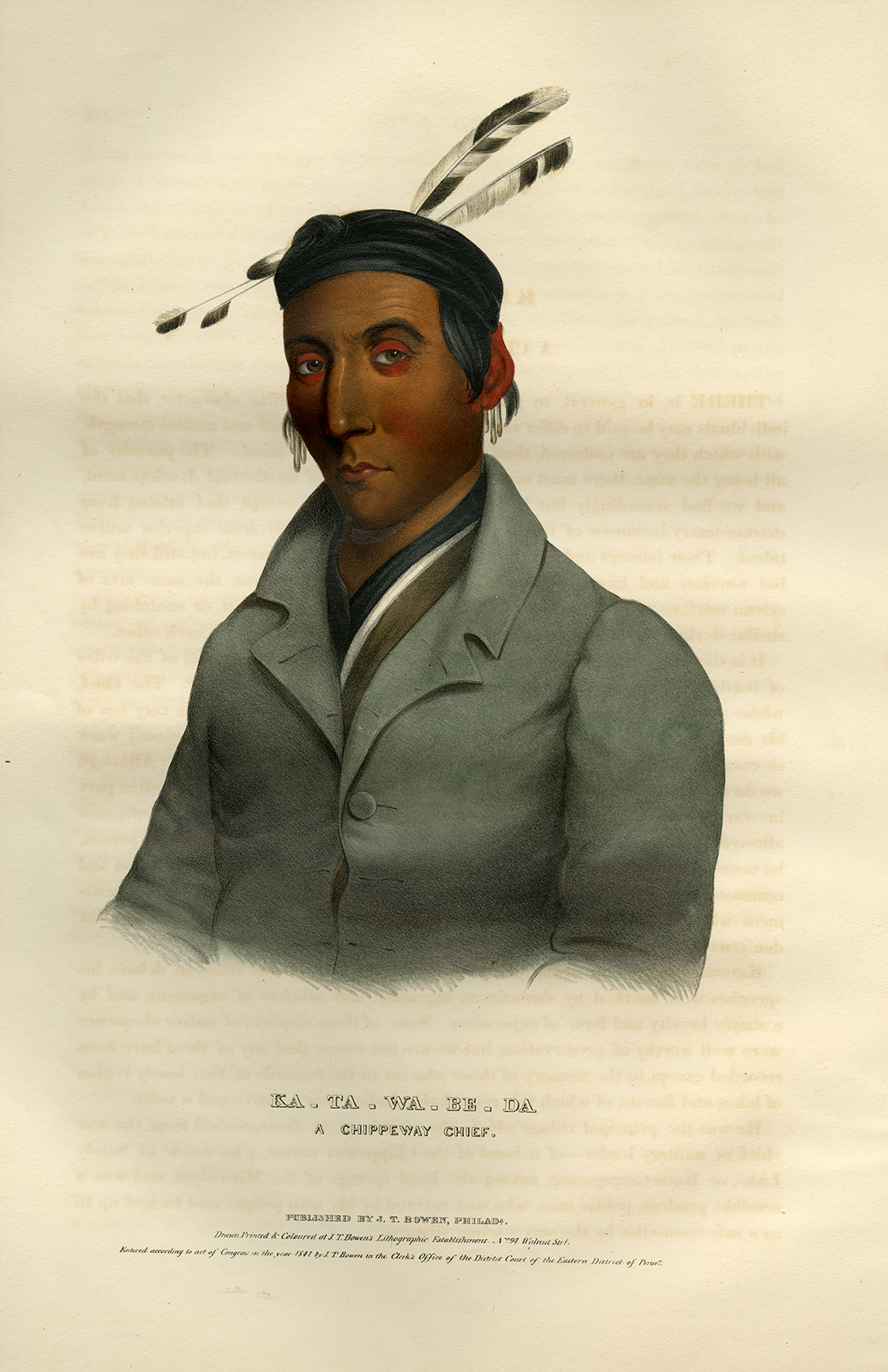J.O. Lewis Indigenous Portraits
 James Otto Lewis was an American engraver and painter known for his portraits of Indigenous leaders.
James Otto Lewis was an American engraver and painter known for his portraits of Indigenous leaders.
In 1819, J.O. Lewis started working as a government employee, traveling with Michigan territorial governor, Lewis Cass, as part of the Bureau of Indian Affairs, within the War Department. As part of his duties, J.O. Lewis was tasked with painting official portraits of Tribal leaders in an effort to preserve a record of Native American history, what was believed, at the time, to be a vanishing culture.
Until 1834, J.O. Lewis traveled the Michigan Territory drawing these portraits at treaties and ceremonies. Lewis accompanied Cass to four major treaty expeditions where he painted Potawatomi, Ojibwe, Odawa, Winnebago, Shawnee, Sioux, Miami, Fox, and Iowa leaders.
Most of the images in The Aboriginal Portfolio were created during these expeditions. Lithographs of the portraits were published in Philadelphia between 1835 and 1836. The works were issued in 10 parts, each with 8 plates.
Lewis passed away in 1858 in New York City. His original portraits became part of the Smithsonian’s holdings, but the entire collection was destroyed in the 1865 Smithsonian fire.
Most surviving copies include only 72 plates, because a lack of interest in the printed series caused the printers to delay the tenth installment.
The Clarke Historical Library has a total of 84 lithograph portraits of Great Lakes Tribal leaders, most of which are from the Lewis Aboriginal Portfolio and others being from McKenney and Hall’s work. These portraits have been scanned for your viewing. Requests for reproductions of these images can be made by contacting the Clarke Historical Library at clarke@cmich.edu.
















































































